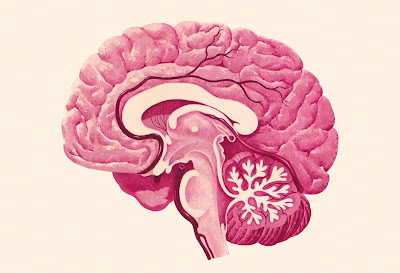What is Hyperthymestic Syndrome
Hyperthymestic syndrome is also known as hyperthymesia. It is a condition in which a person can remember more about the past than an average person can remember. They are said to have a super memory. It is a Greek word derived from two words, i.e., hyper and thymesis. Hyper means excessive or super, and thymesis means remembering. Hyperthymestic syndrome is related to the mental state of the person. It is a neurological condition in which a person is able to store and remember a greater no. of events that happened in the past.
These events may be close to a person like a great sorrow, big news, whatever it is good or bad, life experiences, and many more. The special thing about Hyperthymestic syndrome is, a person can remember even a small life event that an average person can easily forget and can’t remember thinking. Scientists revealed that a person with Hyperthymestic syndrome has a deep memory than an average person. This syndrome is also named as “highly superior autobiographical memory HSAM” because it is said that a person with Hyperthymestic syndrome has an unusual level of memory about events that happened to him/her. Hyperthymestic syndrome can be easily judged on the basis of signs and symptoms it shows. A person with Hyperthymestic syndrome looks like a normal person, but the difference is in their memory recalling ability.

Hyperthymestic syndrome shows the following signs and symptoms:
People say that it is a unique neurological condition, but it does exist in ancient times and was diagnosed on the basis of questions asked to person about his/her past events (minor or major events). Today there are three types of tests, i.e., motor function tests, radiographic scanning tests, and electrophysiological tests, which are performed to confirm Hyperthymestic syndrome. All these tests are performed under the supervision of a professional radiologist and electrophysiologist.
The most common test among all is the motor function test, which tells all about the neuronal activity of the brain. It includes the visual-motor function test, lateralization, pattern recognition test, language ability test, and executive function test. Likewise, radiographic scanning also consists of some tests, i.e., magnetic resonance imaging MRI and computed tomography scan CT scan. Electroencephalograph EEG is performed in the electrophysiological tests.
The exact cause behind Hyperthymestic syndrome is still unknown. Scientists, after vast research on Hyperthymestic syndrome, reveals that it happens due to problems in the temporal lobe of the brain. The temporal lobe, along with the caudate nucleus, becomes enlarged. As temporal lobe is associated with memory and responsible for regulating semantic and episodic memory. Hyperthymestic syndrome is not a pathological condition; it is just a change in the normal functioning of the temporal lobe. Everyone wants to have a sharp memory, so it is not undesirable. Normally people are okay with their super memory, but if there are some complications, then therapies are performed along with proper treatment.
These events may be close to a person like a great sorrow, big news, whatever it is good or bad, life experiences, and many more. The special thing about Hyperthymestic syndrome is, a person can remember even a small life event that an average person can easily forget and can’t remember thinking. Scientists revealed that a person with Hyperthymestic syndrome has a deep memory than an average person. This syndrome is also named as “highly superior autobiographical memory HSAM” because it is said that a person with Hyperthymestic syndrome has an unusual level of memory about events that happened to him/her. Hyperthymestic syndrome can be easily judged on the basis of signs and symptoms it shows. A person with Hyperthymestic syndrome looks like a normal person, but the difference is in their memory recalling ability.

Hyperthymestic syndrome shows the following signs and symptoms:
- A person has deep semantic memory and recalls life events in the form of episodes when a semantic clue is received.
- They have the ability to revise even small or minor events held in the past.
- The exceptionally have the ability to memorize high reasoning capacity.
People say that it is a unique neurological condition, but it does exist in ancient times and was diagnosed on the basis of questions asked to person about his/her past events (minor or major events). Today there are three types of tests, i.e., motor function tests, radiographic scanning tests, and electrophysiological tests, which are performed to confirm Hyperthymestic syndrome. All these tests are performed under the supervision of a professional radiologist and electrophysiologist.
The most common test among all is the motor function test, which tells all about the neuronal activity of the brain. It includes the visual-motor function test, lateralization, pattern recognition test, language ability test, and executive function test. Likewise, radiographic scanning also consists of some tests, i.e., magnetic resonance imaging MRI and computed tomography scan CT scan. Electroencephalograph EEG is performed in the electrophysiological tests.
The exact cause behind Hyperthymestic syndrome is still unknown. Scientists, after vast research on Hyperthymestic syndrome, reveals that it happens due to problems in the temporal lobe of the brain. The temporal lobe, along with the caudate nucleus, becomes enlarged. As temporal lobe is associated with memory and responsible for regulating semantic and episodic memory. Hyperthymestic syndrome is not a pathological condition; it is just a change in the normal functioning of the temporal lobe. Everyone wants to have a sharp memory, so it is not undesirable. Normally people are okay with their super memory, but if there are some complications, then therapies are performed along with proper treatment.
What is Hyperthymestic Syndrome
 Reviewed by Simon Albert
on
June 21, 2020
Rating:
Reviewed by Simon Albert
on
June 21, 2020
Rating:
 Reviewed by Simon Albert
on
June 21, 2020
Rating:
Reviewed by Simon Albert
on
June 21, 2020
Rating:











